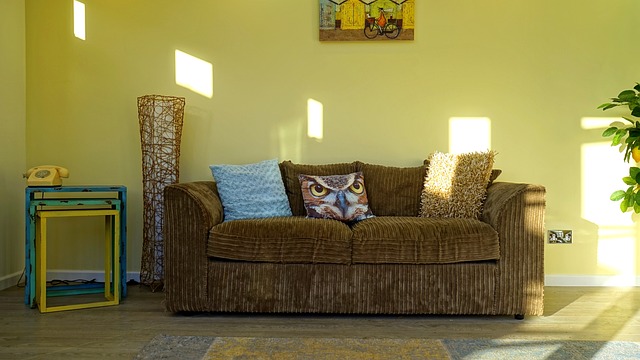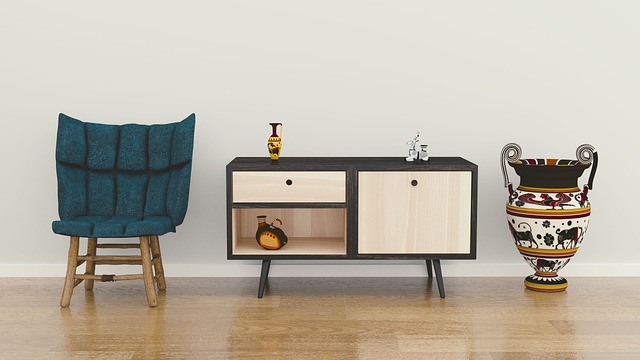Choosing the Right Chair for Back Health
9 min read
In today’s sedentary lifestyle, where a significant portion of our time is spent sitting, selecting an appropriate chair becomes crucial for maintaining good back health. The right chair can provide adequate support, promote proper posture, and minimize the risk of developing back pain or discomfort. This article delves into the essential factors to consider when choosing a chair that prioritizes back health. Ergonomics, the science of designing products to optimize human well-being and performance, plays a pivotal role in chair selection. An ergonomically designed chair aligns with the natural curvature of the spine, allowing for improved sitting posture and reducing strain on the back muscles. When searching for an ideal chair, prioritize the following features:
- Adjustable Lumbar Support: The lumbar region, or lower back, is particularly vulnerable to strain. Look for a chair that offers adjustable lumbar support, enabling customization to accommodate individual preferences. This feature ensures that the chair adequately supports the natural inward curve of the lower spine, reducing the risk of slouching or straining the back muscles.
- Height Adjustability: A chair with height adjustability is essential to achieve proper alignment between the desk or table and the user’s body. Ideally, the chair’s height should allow the feet to rest flat on the floor while maintaining a 90-degree angle at the knees. This positioning promotes proper blood circulation and reduces pressure on the lower back.
- Seat Depth and Width: The seat dimensions are critical for optimal comfort and support. A seat that is too shallow or narrow can result in increased pressure on certain areas, leading to discomfort and poor posture. On the other hand, a seat that is too deep may cause slouching or inadequate back support. Look for a chair with adjustable seat depth and width to ensure a proper fit for your body.
- Adjustable Armrests: Armrests that can be adjusted in height and width play a vital role in reducing strain on the upper back, neck, and shoulders. The armrests should allow the user’s arms to rest comfortably at a 90-degree angle while keeping the shoulders relaxed. This feature helps prevent unnecessary tension in the upper body and supports overall back health.
- Material and Padding: The choice of chair material and padding can significantly impact comfort and long-term back health. Opt for a chair with breathable and supportive materials that promote airflow and prevent excessive heat buildup. Adequate padding should provide cushioning without being too soft or too firm, ensuring optimal weight distribution and reducing pressure points.
- Swivel and Mobility: A chair with a swivel base and smooth mobility can enhance flexibility and reduce the strain caused by repetitive movements. The ability to rotate easily and reach different areas of the workstation without straining the back or twisting the body excessively is essential for back health.
How to Find the Best Chair for Good Posture and Back Support
A well-designed chair is essential for maintaining good posture and providing adequate back support, especially during long hours of sitting. Whether you work in an office, study at home, or spend considerable time at your desk, choosing the right chair is crucial for your back health. In this guide, we will explore the key factors to consider when selecting the best chair for good posture and back support.
- Ergonomic Design:
The first and foremost feature to look for in a chair is its ergonomic design. Ergonomics focuses on optimizing the interaction between people and their environment to enhance comfort, productivity, and overall well-being. A chair with ergonomic features is specifically designed to support the natural curves of the spine, promote proper posture, and reduce strain on the back. Look for chairs that offer adjustable height, seat depth, and lumbar support to accommodate different body types and preferences. - Lumbar Support:
Proper lumbar support is vital for maintaining the natural curvature of the spine. Look for chairs with built-in lumbar support, which provides a gentle inward curve to support the lower back. This feature helps alleviate pressure on the lumbar discs and promotes a neutral spine alignment. Some chairs offer adjustable lumbar support, allowing you to customize the level of support according to your needs. - Adjustable Features:
The ability to adjust various chair settings is essential for achieving optimal comfort and support. Look for chairs with adjustable seat height, as it enables you to position your feet flat on the floor with your knees at a 90-degree angle. Chairs with adjustable seat depth allow you to modify the seat pan’s depth to ensure proper thigh support. Additionally, chairs with adjustable armrests provide support to the arms and shoulders, reducing strain on the upper back and neck. - Seat Cushioning:
The seat cushioning plays a significant role in providing comfort and support. Look for chairs with high-quality, dense foam padding that offers adequate cushioning without losing its shape over time. The cushioning should distribute your body weight evenly, reducing pressure points and preventing discomfort. Additionally, consider chairs with breathable and moisture-wicking fabrics to enhance airflow and keep you cool and dry during extended periods of sitting. - Backrest Design:
The backrest design is another crucial aspect to consider. Look for chairs with an adjustable backrest that allows you to recline and lock it in different positions. A reclining backrest helps relieve pressure on the spinal discs, promotes blood circulation, and reduces muscle tension. Furthermore, chairs with a backrest that conforms to the natural S-shaped curvature of the spine provide optimal support and help maintain proper posture. - Material and Durability:
Consider the material and build quality of the chair to ensure its durability and longevity. Chairs made from high-quality materials such as breathable mesh, leather, or durable fabric tend to offer better support and withstand regular use. Sturdy construction, reinforced frames, and smooth mechanisms are indicators of a well-built chair that can withstand the test of time. - Mobility and Swivel Base:
If you require mobility or frequently move around your workspace, consider chairs with a swivel base and smooth-rolling casters. These features allow you to rotate and move freely without straining your back or having to twist your body excessively. Ensure that the casters are suitable for your floor type to prevent any damage or difficulty in maneuvering.

Top 5 Ergonomic Chairs for Back Pain Relief
Choosing the right chair is crucial for maintaining back health, especially for individuals experiencing back pain. In this article, we will explore the top 5 ergonomic chairs designed specifically to provide relief from back pain. These chairs incorporate advanced features and ergonomic design principles to support proper posture, reduce strain on the back, and alleviate discomfort. Whether you spend long hours working at a desk or suffer from chronic back pain, these chairs can significantly contribute to your overall well-being and productivity.
- ErgoMax Office Ergonomic Chair:
The ErgoMax Office Ergonomic Chair is a popular choice for individuals seeking back pain relief. It features a contoured backrest that conforms to the natural curvature of the spine, promoting proper alignment. The adjustable lumbar support allows for personalized comfort and helps alleviate pressure on the lower back. With its breathable mesh fabric and height-adjustable armrests, this chair offers optimal support for prolonged sitting sessions. - Herman Miller Aeron Chair:
The Herman Miller Aeron Chair is renowned for its exceptional ergonomic design. Equipped with a PostureFit SL technology, it supports the natural S-shape of the spine and provides targeted lumbar support. The chair’s innovative suspension system and breathable mesh material promote airflow, reducing heat buildup. Its adjustable armrests and recline function allow for customization, ensuring optimal comfort and back pain relief throughout the day. - Steelcase Gesture Chair:
Designed for modern work environments, the Steelcase Gesture Chair is engineered to adapt to various sitting postures, reducing strain on the back and neck. The chair’s LiveBack technology automatically adjusts to mimic the movement of the spine, promoting dynamic sitting. Its flexible armrests and seat pan provide optimal support and accommodate different body types. With a wide range of adjustable features, this chair offers personalized comfort and alleviates back pain effectively. - Humanscale Freedom Chair:
The Humanscale Freedom Chair is a highly adjustable ergonomic chair that prioritizes individualized comfort. Its unique weight-sensitive recline mechanism ensures that the chair responds to the user’s movements, providing optimal support and promoting natural spine alignment. The chair’s contoured backrest and adjustable headrest contribute to reducing back strain and relieving tension. Additionally, the Freedom Chair’s armrests can be easily adjusted to suit various tasks and preferences. - Steelcase Leap Chair:
The Steelcase Leap Chair is designed to adapt to the user’s movements and promote healthy posture. It features a patented LiveBack technology that flexes with the natural shape of the spine, offering continuous support. The chair’s adjustable lumbar support system helps alleviate lower back pain by providing personalized comfort. The Leap Chair’s intuitive controls allow for quick adjustments, and its breathable upholstery enhances airflow, ensuring a cool and comfortable sitting experience.

Are Mesh Chairs Better for Your Back?
When it comes to choosing the right chair for back health, one option that has gained significant attention is the mesh chair. Mesh chairs have become increasingly popular in recent years due to their unique design and purported benefits for spinal support and overall back comfort. In this article, we will explore whether mesh chairs are indeed better for your back and delve into the reasons behind their potential advantages. Mesh chairs are specifically engineered with a seat and backrest made from a breathable mesh material, which offers several advantages over traditional chairs with solid upholstery. One of the primary benefits of mesh chairs is their ability to provide superior ventilation and airflow.
The open-weave design of the mesh allows for better heat dissipation, reducing the likelihood of excessive perspiration and discomfort during prolonged sitting. By minimizing heat buildup, mesh chairs promote a more comfortable sitting experience, which can indirectly contribute to better back health. Moreover, the mesh material used in these chairs offers a unique level of flexibility and contouring. Unlike rigid surfaces found in conventional chairs, the mesh conforms to the natural curvature of the spine, providing customized support to different areas of the back. This adaptability helps distribute body weight evenly, alleviating pressure points and reducing the strain on the spine. By promoting proper alignment, mesh chairs can contribute to improved posture, a crucial factor in maintaining a healthy back. Another noteworthy advantage of mesh chairs is their ergonomic design. Most high-quality mesh chairs incorporate a range of adjustable features to accommodate individual needs and preferences. These features typically include adjustable seat height, lumbar support, armrests, and recline options. Customizable ergonomic settings allow users to fine-tune their sitting positions, ensuring optimal spinal alignment and reducing the risk of back pain and discomfort. Additionally, mesh chairs often utilize a suspension system that combines the mesh material with a supportive frame. This combination offers a balanced blend of flexibility and stability. The mesh provides the necessary support, while the frame ensures structural integrity and durability. This well-engineered construction helps maintain the integrity of the chair over time, ensuring continued back support and longevity. It is worth noting that while mesh chairs offer several potential benefits for back health, they may not be suitable for everyone or every scenario.
Factors such as individual body type, pre-existing back conditions, and personal preferences should be taken into consideration when choosing a chair. Some individuals may require more substantial cushioning or specific features not typically found in mesh chairs. It is always advisable to consult with a healthcare professional or ergonomics specialist to determine the most suitable chair for your specific needs. In conclusion, mesh chairs have gained popularity for their potential benefits in promoting back health. Their breathable mesh material, flexibility, ergonomic design, and supportive construction make them a compelling choice for individuals seeking comfort and spinal support. However, it is important to recognize that the suitability of a chair depends on individual circumstances, and professional advice should be sought when making a decision. By considering the unique features and potential advantages of mesh chairs, you can make an informed choice to prioritize your back health and enhance your overall well-being.







Very cool views your blog!